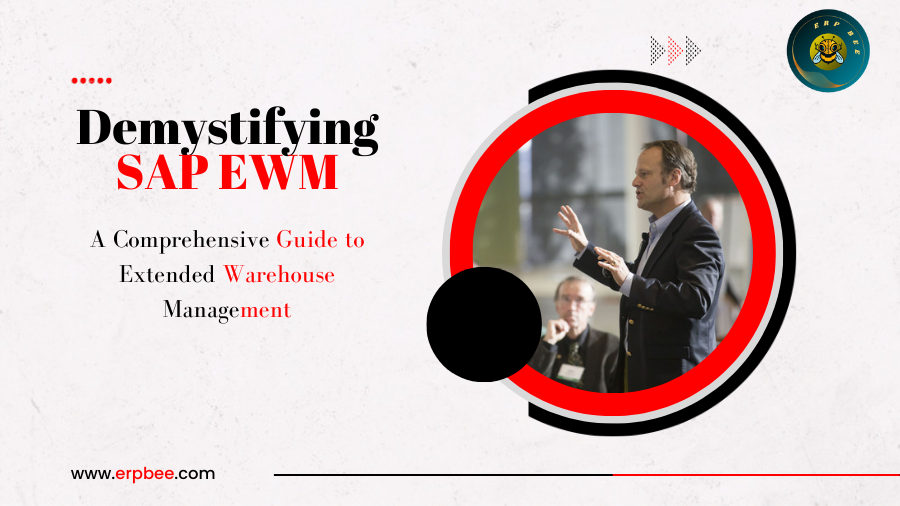Introduction: In today's fast-paced business landscape, efficient warehouse management is a critical component of supply chain success. As organizations strive for streamlined operations and optimized inventory control, advanced solutions like SAP EWM (Extended Warehouse Management) have emerged as indispensable tools. This blog aims to provide a comprehensive overview of SAP EWM, its key features, benefits, and how it revolutionizes warehouse management processes.
Understanding SAP EWM:
SAP EWM is an integral part of the SAP Supply Chain Management (SCM) suite, designed to enhance and optimize warehouse operations. Unlike traditional warehouse management systems, SAP EWM extends its capabilities beyond basic inventory control to offer a holistic approach to managing goods, space, labor, and processes within a warehouse.
Key Features of SAP EWM:
- Advanced Warehouse Structure: SAP Extended Warehouse Management provides a flexible and configurable warehouse structure that allows businesses to define storage bins, storage types, and storage sections tailored to their specific needs.
- Optimized Putaway and Picking: The system optimizes putaway processes by intelligently determining the best storage location for incoming goods based on factors like storage capacity, proximity, and product attributes. Similarly, the advanced picking strategies minimize travel time and maximize efficiency during order fulfillment.
- Resource Management: SAP Extended Warehouse Management efficiently allocates and manages labor resources within the warehouse, ensuring tasks are assigned to the right personnel based on skills, availability, and workload.
- Cross-Docking and Value-Added Services: The solution supports cross-docking, enabling direct movement of goods from inbound to outbound without storage. Additionally, SAP Extended Warehouse Management facilitates value-added services such as kitting, packing, and labeling to meet specific customer requirements.
- Real-Time Visibility: With SAP EWM's real-time monitoring and analytics capabilities, organizations gain insights into warehouse performance, inventory levels, and order status. This visibility empowers better decision-making and timely adjustments.
- Wave Management: SAP EWM offers wave management to bundle similar orders for efficient picking, packing, and shipping, further optimizing labor and resources.
Benefits of SAP EWM:
- Increased Efficiency: SAP EWM's intelligent automation and optimized processes reduce manual interventions, leading to faster order processing, reduced lead times, and improved throughput.
- Enhanced Accuracy: Accurate inventory data and real-time tracking minimize errors, ensuring the right products are picked, packed, and shipped, reducing costly discrepancies.
- Improved Customer Satisfaction: By streamlining processes and ensuring on-time deliveries, SAP EWM contributes to higher customer satisfaction and loyalty.
- Flexibility and Scalability: SAP EWM's flexible architecture allows businesses to adapt to changing needs and scale operations as the business grows.
- Integration Capabilities: Seamlessly integrated with other SAP modules and external systems, SAP Extended Warehouse Management ensures end-to-end visibility and data synchronization across the supply chain.
- Innovation and Future-Readiness: SAP EWM is constantly evolving, incorporating emerging technologies such as IoT (Internet of Things) and AI (Artificial Intelligence) to drive continuous improvement and innovation.
Implementation Considerations: Implementing SAP Extended Warehouse Management requires careful planning, including defining warehouse processes, configuring the system, data migration, user training, and change management. Engaging experienced consultants and following best practices is essential for a successful implementation.
Conclusion:
SAP EWM stands as a game-changer in the world of warehouse management, offering a powerful suite of tools to optimize operations, enhance customer experiences, and drive business growth. As organizations continue to prioritize efficiency, accuracy, and real-time visibility, SAP EWM's capabilities become increasingly essential for staying competitive in today's dynamic marketplace. By embracing SAP EWM, businesses can transform their warehouses into strategic assets that support their overall supply chain objectives.
